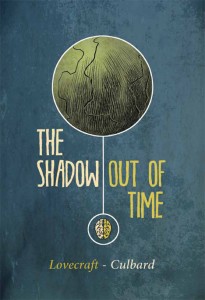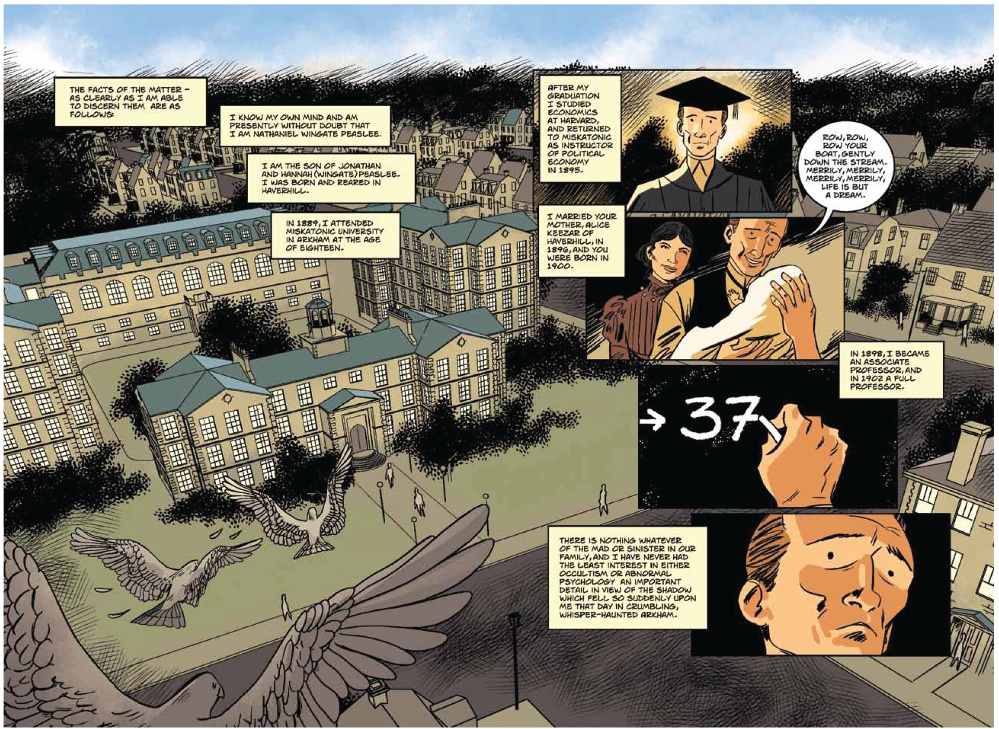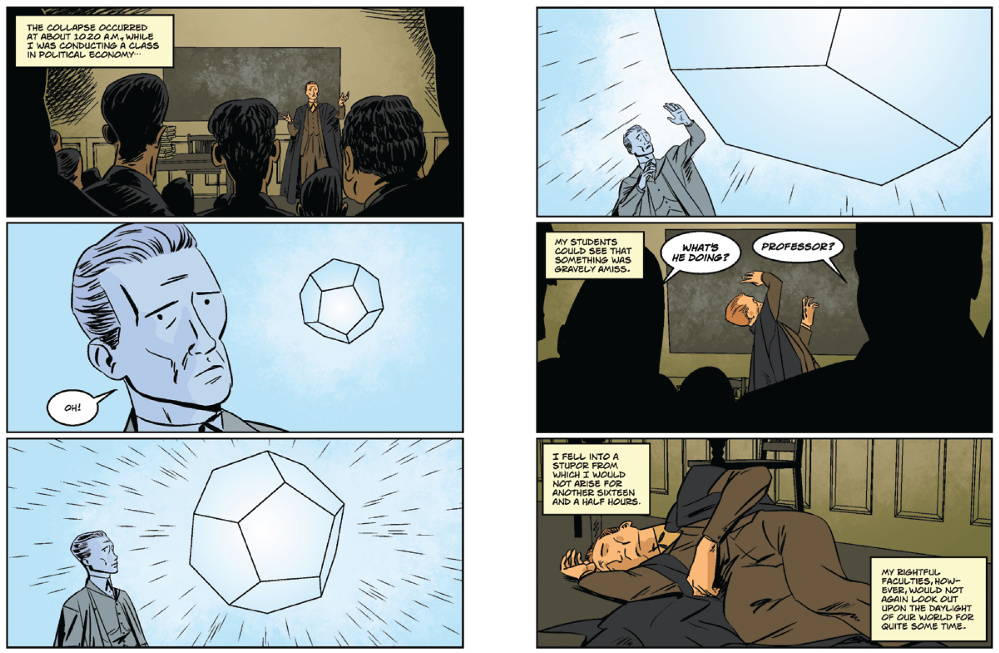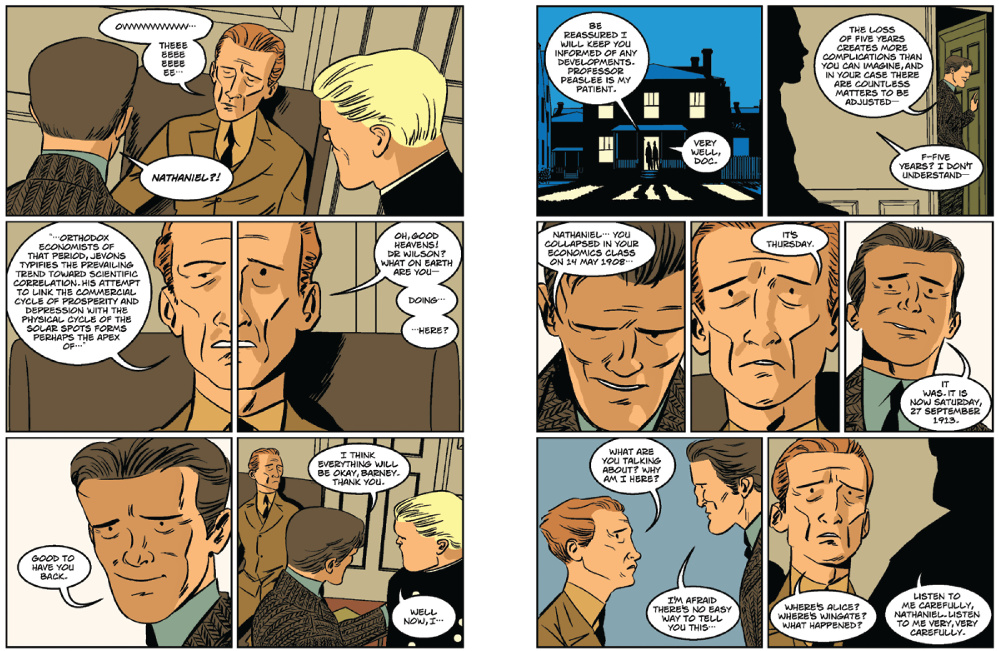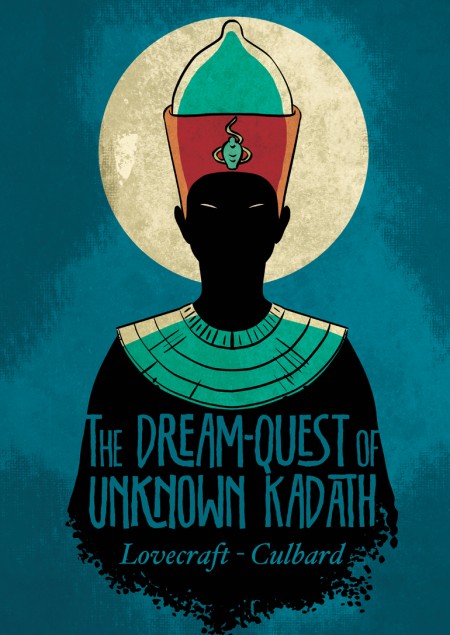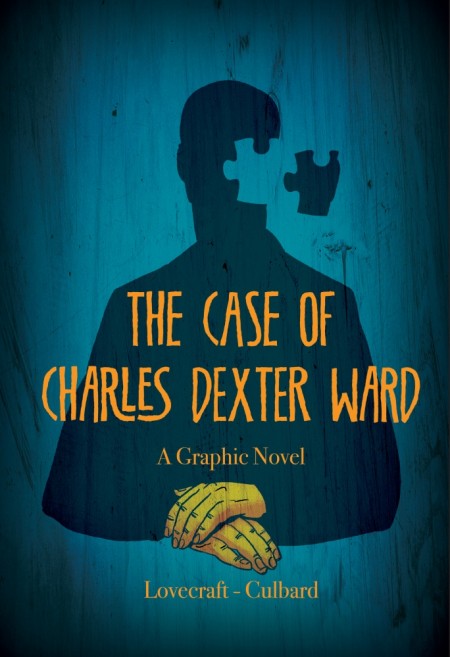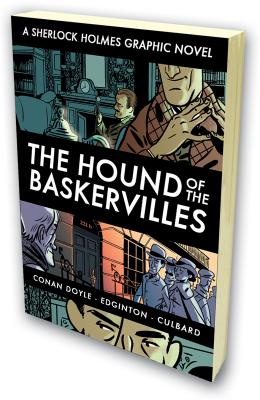SelfMadeHero’s third H.P. Lovecraft adaptation by I.N.J. Culbard, The Shadow Out Of Time is another smashing success.
Nathaniel Wingate Peaslee is a professor of political economy at Miskatonic University. Following a fainting spell in 1908, he returns to his senses in 1913 with no recollection of the last five years of his life. As he endeavours to discover the truth about his lost years, he becomes increasingly tormented by vivid and disturbing dreams; dreams that will lead him on a journey through time and space to unlock the secrets of the universe.
- Author: I.N.J. Culbard
- Author of Original: H.P. Lovecraft
- SelfMadeHero / Abrams, November 5, 2013
- ISBN-13: 9781906838683
- 120 pages, 6.5 x 9.5 inches
- $19.95 USD
- Order online: Amazon
This is my seventh Culbard adaptation including the four Doyle Sherlock Holmes novels and the two previous Lovecraft works, all from SelfMadeHero. Based on these my expectations were high, and to my satisfaction, they were exceeded.
The Shadow Out Of Time delves deeply into alternate dimensions and time travel, taking our lead Peaslee to other worlds when his mind is swapped. For me the letdown of these stories is seeing the aliens (other-dimensional creatures if you prefer): they just never hold up to what is imagined from strictly the written word. The real horror lies in the discovery of knowing, and Culbard does an excellent job adapting this work. It’s the build-up, the slow unravelling of events that lead from one disturbing item to the next.
In fact, Culbard has a piece up at The Huffington Post of all places about his process for adaptations. Here’s the juicy bit:
Now, I have two rules at this point:
Rule number 1. You must stay true to the spirit of the story.
Rule number 2. You must stay true to medium to which the story is being adapted.
I didn’t want to ever approach Lovecraft’s work and just copy and paste his prose into my book and not leave out a single word. There’s little point doing that. That’s not an adaptation. That’s a transcription. You don’t watch a movie adaptation and have a narrator droning on for eight hours as you try to watch a film. So that’s rule number two and that dictates that a lot of that lengthy prose has to go. With a visual medium like comics, much like the movies, you’re going to be showing not telling. There’s going to be a great deal of visual exposition because that’s true to the medium, otherwise people might as well just read the original book. An adaptation is a different experience.
I think there’s sometimes the perception that an adaptation, be it film or comics, is almost like the CliffNotes for a book you can’t be bothered reading. A short cut if you like. And they really shouldn’t be that. There should be a value to reading an adaptation and reading the original, just as there would be a value to seeing a film adaptation. My adaptations have to work as books in their own right and hopefully they do just that.
The atmosphere is critical for this type of story and Culbard achieves it with every page. Colour plays a major role throughout but shadow and the absence of light are strong and heavily contribute. The last quarter of the book takes place in the dark with only a flashlight and the stars to guide Peaslee. It’s gripping, tense and thoroughly enjoyable.
I’ve read numerous criticisms online about the lack of unique features in Culbard’s faces. Looking at the pages above you can see that with his minimalist style there are visual identifiers such as shape, cheekbones, and hair to define. Yes, there isn’t a lot of change but there is an extensive emotional range shown.
Production quality is excellent: sewn binding, thick paper and cover stock, short bios on the french-fold flaps. Even though it’s a softcover book it’s designed to last. As usual, no extras, introductions or behind the scenes included. An excellent value at $20.
Originally published at Comic Book Daily.

